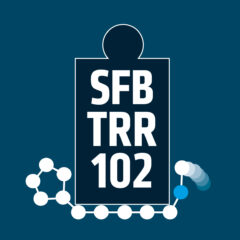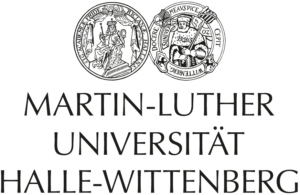Muhammad Tariq on “Interface Controlled Thermodynamics of First-Order Prefreezing”
and
Anika Wurl on “Polymer crystallization under anisotropic confinement in liquid crystals”
Location: UL, Linnéstr. 5, SR 532 Time: 3.30pm-5.00pm Link to OpenStreetMap
Abstracts
Interface Controlled Thermodynamics of First-Order Prefreezing
Muhammad Tariq
Heterogeneous nucleation and prefreezing are two possible mechanism by which a solid surface can induce crystallization of liquids. In contrast to heterogeneous nucleation, first-order prefreezing is an equilibrium phenomenon that refers to the reversible and abrupt formation of a crystalline layer of thickness ???? at an interface to a solid surface at the temperature ?max well above the bulk melting temperature ?m [1, 2]. Thickness of the prefrozen layer ?eq(?) diverges upon further cooling to bulk ?m [1]. Most recently developed phenomenological theory of prefreezing [3] predicts ?max to be a function of the difference of interfacial free energies ∆? = ????,???? − (????,??? + ????,????) and ????,????, whereas ??? and ???? are determined by ????,???? and ∆?/ ????,???? respectively.
Here, I will be presenting an experimental test of the theory by extending our investigations of prefreezing of poly(ε-caprolactone) (PCL) on graphite to a MoS2 substrate. Using in-situ atomic force microscopy AFM measurements at elevated temperatures, we determine equilibrium properties of the prefrozen PCL layer on MoS2. These properties include the temperature range of prefreezing ????, prefrozen layer thickness ?eq (?) above the bulk ?m, and discontinuous jump in thickness lmin at Tmax. In comparison with PCL-HOPG, we find a clear decrease in leq(T) and lmin but Tmax remains nearly unaffected. We analyze our experimental results with the phenomenological theory [3] and estimate the material parameters at the solid interface. A comparison of the material parameters for prefrozen PCL on MoS2 and HOPG shows that above mentioned experimental observations are in good agreement with the predictions of the phenomenological theory.
References:
[1] A.-K. Flieger, M. Schulz, T. Thurn-Albrecht, Macromolecules, 51, 189 (2018).
[2] A.-K. Löhmann, T. Henze, T. Thurn-Albrecht, PNAS, 111, 17368 (2014).
[3] O. Dolynchuk, M. Tariq, T. Thurn-Albrecht, J. Phys. Chem. Lett. 10, 1942 (2019).
Polymer crystallization under anisotropic confinement in liquid crystals
Anika Wurl
With increasing amounts of polymer nanoparticles in earth’s oceans and rivers, the study of interactions between lipid membranes and synthetic polymers is receiving a growing interest. In this project, we investigate if hydrophobic polymer chains, e.g. poly(ε-caprolactone) (PCL), can crystallize in anisotropically confined environments such as lipid bilayers or synthetic liquid-crystalline systems. In a system of PCL, dipalmitoylphosphatidylcholine (DOPC) and water, 13C INEPT NMR and differential scanning calorimetry (DSC) results showed that the system seperated into a phase of pure PCL as well as a mixed phase of DOPC and PCL, where crystallization of PCL possible. We now extend our research to liquid-crystal phases of block-copolymers of type (EO)n-(PO)m-(EO)n. In this way, we aim to study the effects of different confinement variables on crystallization properties such as nucleation, growth and crystal morphology using a combination of 1H, 2H and 13C NMR, polarized optical microscopy and molecular dynamics simulations.





One thought on “Doctoral students seminar (July 9, 2019)”